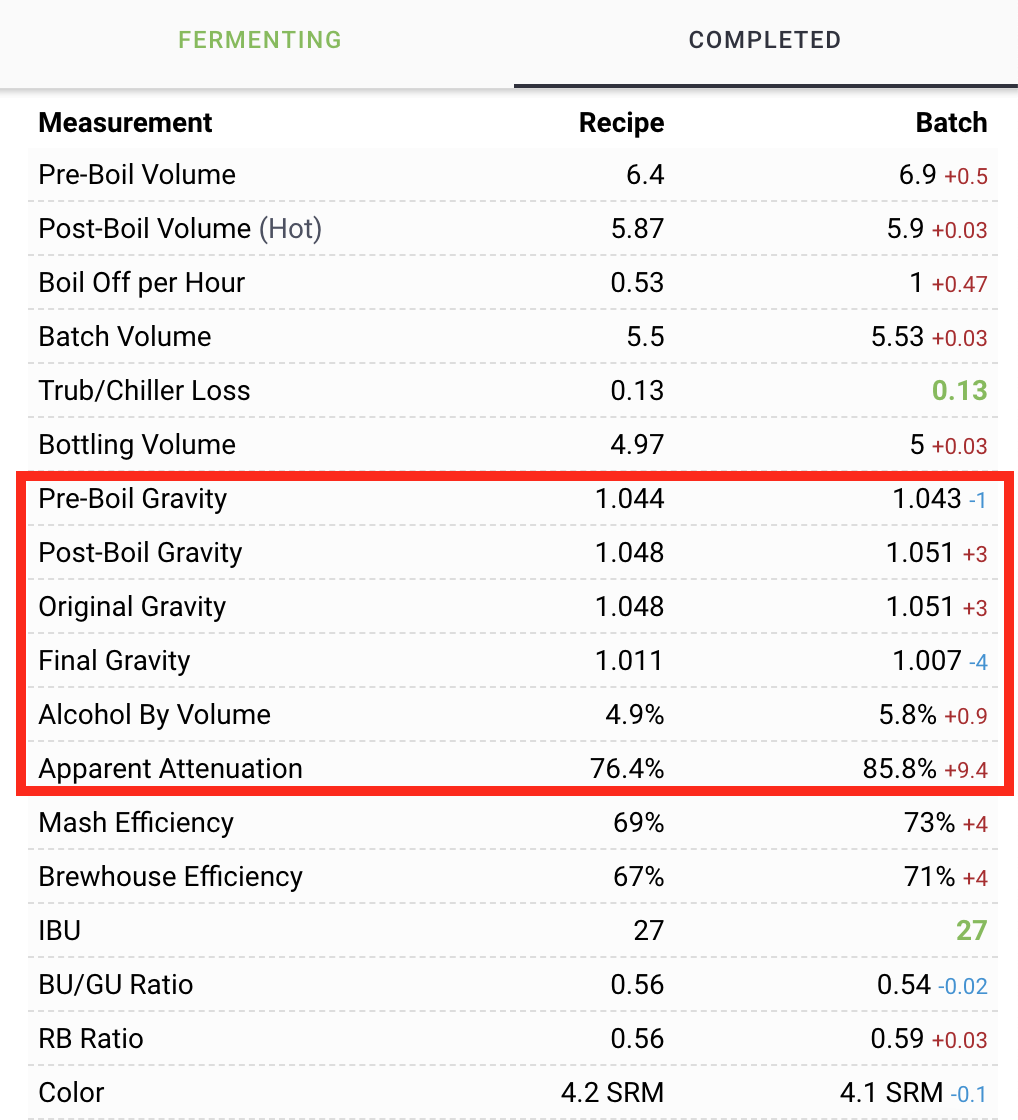I'm not obsessed with gravity readings, but I'd say over the 10 batches I've brewed this year, maybe 2 came in to where I expected. The rest all had a lower than expected FG. I don't really care if it's close-ish, but the last batch of Kolsch I brewed was way off. I was looking for a lighter beer that my wife could enjoy which was supposed to be 4.7 ABV, and I ended up with a 5.8%er which is a fair difference. The screenshot are the details from what I logged in Brewfather - predicted measurements vs. actual.
I'd love to hear from folks what adjustments they would have made on brewday to bring this batch back in line.
Equipment profile: BIAB
Batch size 5.5 gallons
Recipe:
9.35 lbs Pilsen Malt
0.75 lbs Munich Light
0.30 lbs Carapils
Mash: 60 min @ 150F
10 min @ 167
Boil: 60 min
I made a yeast starter using Wyeast 2565, fermented at 64.4F with a gradual ramp up to 68F.

I'd love to hear from folks what adjustments they would have made on brewday to bring this batch back in line.
Equipment profile: BIAB
Batch size 5.5 gallons
Recipe:
9.35 lbs Pilsen Malt
0.75 lbs Munich Light
0.30 lbs Carapils
Mash: 60 min @ 150F
10 min @ 167
Boil: 60 min
I made a yeast starter using Wyeast 2565, fermented at 64.4F with a gradual ramp up to 68F.



